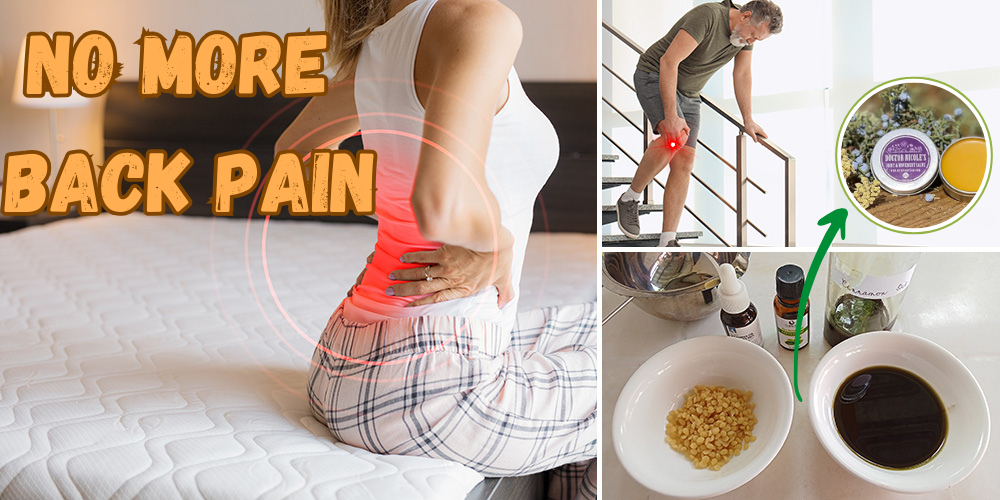
DIY Cinnamon Balm for Joint Pain
Cinnamon is not only an aromatic spice that enhances culinary dishes and confectionery but also a recognized herbal remedy for oxidative stress and pain. But did you know the anti-inflammatory compounds in cinnamon are found to help with arthritis and joint pains? Let me share with you the DIY Cinnamon Balm Recipe for Joint Pain—it works wonders! Cinnamon is consumed in different forms. It is available as a cinnamon stick, powder, essential oil, tincture, or supplement capsule. It may also be prepared as a healing balm to effectively treat nagging joint pains.
Cinnamon for Pain
Cinnamon is not always the first option for home remedies for pain. It is likely consumed as a flavoring which undermines its therapeutic value. However, many studies support the effectiveness of cinnamon in dealing with different health issues including chronic pain. In Ayurvedic practices, cinnamon is used for treating diseases of the mouth and throat, bladder problems and heart conditions. Therapeutic cinnamon has the following actions that work effectively against soreness and pain:
Anti-Inflammatory
Cinnamon contains cinnamaldehyde, a naturally occurring flavonoid that gives cinnamon its distinctive taste and aroma. Cinnamaldehyde, or cinnamic aldehyde, inhibits inflammation making it an effective remedy for pain in osteoarthritis. Consumption of cinnamon can inhibit the formation and release of arachidonic acid, an inflammatory type of fatty acid. My first encounter with the power of an anti-inflammatory diet came from a family friend who struggled with relentless joint pain. Medications only offered temporary relief, and the pain always came back. Then, she made one simple change—her diet. By focusing on foods that reduce inflammation (click here for the list), like cinnamon, and cutting out the ones that make it worse, she started seeing real results. It wasn’t just her joints that felt better; her energy improved, and even her mood lifted. This is why an anti-inflammatory diet can be life-changing. It doesn’t just treat the symptoms; it tackles the root cause. If you’re curious about how to harness this approach, this guide can walk you through every step. It’s a practical, proven way to start healing from within.
Antioxidant Activity
Antioxidants are beneficial in joint pain caused by autoimmune diseases like rheumatoid arthritis. The powerful antioxidants in cinnamon ease joint pains and prevent further damage to the surrounding cells by reducing the free radicals.
Analgesic
A study on the analgesic efficacy of cinnamon shows its potential to be used as an effective pain treatment. It is attributed to its active compounds such as cinnamaldehyde, eugenol, coumarin and other flavonoids. These compounds may also be applied topically to alleviate pain and speed up wound healing.
Circulatory
Some joint pains are associated with poor blood circulation which happens when tissues are deprived of oxygen and nutrients. Cinnamon possesses an effective circulatory property that improves blood flow to different cells and tissues. Cinnamon oil may be applied topically to promote energy flow and boost circulation in a specific area.
Anti-Arthritis
Cinnamon consumption can generally reduce arthritic pain. The result of a clinical trial conducted in women with rheumatoid arthritis suggests cinnamon supplementation as a safe treatment for RA.
Other Benefits of Cinnamon
Whether it is taken internally or applied topically, cinnamon brings a myriad of health benefits. It can be used for treating diseases and health issues such as:
High Cholesterol
Adding cinnamon to the diet may decrease LDL and triglycerides in the body. It can increase the body’s HDL (good cholesterol) to prevent the development of fatty deposits or arterial plaque in the blood vessels. High levels of LDL have been linked to cardiovascular diseases and peripheral artery disease. Low levels of HDL have been associated with an increased risk of certain cancers.
But the chance of all these can be easily lowered by helping your body fight against its weaknesses. Herbal remedies that target your heart are essential to anyone’s medicinal cabinet. Here’s the already-made remedy that made me avoid cholesterol buildup.
Allergy
Cinnamon extract may inhibit allergic inflammation and prevent airway swelling and skin allergies. On the contrary, some people may also exhibit allergic reactions to cinnamon. Individuals with sensitivity to its protein may experience hives, nausea, and upset stomach.
Diabetes
Cinnamon is one of the most effective spices for stabilizing blood sugar levels. It can slow the rate by which the stomach empties for the body to metabolize carbohydrates better. It also improves insulin sensitivity to manage the spike in blood sugar. A few years ago, a close friend of mine struggled with managing their Type 2 diabetes. Every day felt like a guessing game—what to eat, how to balance stress, and whether their efforts were really making a difference. It wasn’t just about blood sugar; it was about the constant weight of not knowing if they were doing enough. Then, they discovered a book that changed everything. This wasn’t just another guide—it was a complete protocol, mapping out every step to manage diabetes holistically. From morning routines to evening habits, it covered diet, gut health, weight loss, herbal medicine, and even stress management. What struck me most was how actionable it was. It didn’t just help them—it became their roadmap for thriving, not just surviving. I believe this is something every household should have. Whether you’re managing diabetes yourself or know someone who is, this book could make all the difference. Sometimes, just having the right tools can change a life. You can check out more about it here.
Cognitive Problems
Cinnamon may boost brain activity and improve cognitive functions. It is considered one of the promising prospects in the treatment of Alzheimer’s disease because of its neuroprotective and antioxidant properties.  My grandma always swore by her morning sprinkle of cinnamon—on oatmeal, in tea, even in soups. She used to say, “Keeps my head clear!” Turns out, she might’ve been onto something. Research now shows how cinnamon can actually help memory, focus, and protect the brain as we age. If you want to find out more about it, I’ll leave you a link here.
My grandma always swore by her morning sprinkle of cinnamon—on oatmeal, in tea, even in soups. She used to say, “Keeps my head clear!” Turns out, she might’ve been onto something. Research now shows how cinnamon can actually help memory, focus, and protect the brain as we age. If you want to find out more about it, I’ll leave you a link here.
Heart Diseases
Cinnamon is an effective blood tonic that thins the blood and prevents the buildup of plaque deposits in the arterial wall. It may reduce the risk of cardiac problems and improve the overall function of the circulatory system.
DIY Cinnamon Balm for Joint Pain
Cinnamon oil is one of the most effective forms of cinnamon for topical application. It can be absorbed in the body through the skin and may relieve tired muscles and achy joints. Applying it topically may also revive the skin tone and nourish it for a healthier glow. Cinnamon oil is often used in cosmetic preparations such as lip balms and lotions. Its warming aroma not only heals skin problems but may also enhance the mood and help the body relax. Some pain relievers like Tiger Balm contain cinnamon oil boosting their anti-inflammatory properties. You may also prepare your own balm or salve at home using pure cinnamon oil for various uses.
Ingredients
 For the cinnamon-infused oil:
For the cinnamon-infused oil:
- ½ cup olive oil (or any carrier oil of choice such as coconut oil or jojoba)
- 4 tbsp ground cinnamon
 For the Cinnamon balm:
For the Cinnamon balm:
- ¼ cup of the cinnamon-infused oil
- 1 tbsp beeswax
- ¼ tsp vitamin E oil (optional)
- 5 to 10 drops of essential oil of choice (optional)
Steps
To prepare the cinnamon-infused oil:
- Heat olive oil over medium heat.

- Add cinnamon powder.

- Simmer for 5 minutes.

- Remove from heat. Let cool then strain and transfer into a glass jar.

- Keep the jar in a cool and dark place for at least 2 to 3 weeks to allow the cinnamon oil to infuse.

To prepare the balm:
- Place the beeswax in a double boiler and gently warm it until it melts. If you don’t have a double boiler, use any heat-resistant container and float it over hot water.
 Add the cinnamon-infused oil and stir well to mix over low heat.
Add the cinnamon-infused oil and stir well to mix over low heat.
- Remove from heat and add the Vitamin E and essential oil. I used peppermint essential oil to complement the aroma of cinnamon and give the balm some heat and an added boost of pain-relieving properties.

- Pour the mixture into a glass jar or balm container while still warm.

- Let the balm cool completely and store it in a cool location.

How To Use
Apply liberally on the affected area, applying gentle pressure to massage the achy joints. Use it once or twice a day, preferably before bedtime. Balms are typically harder and waxy. If you want a creamier and softer consistency like a salve, reduce the amount of beeswax in half or add more cinnamon oil. To avoid unnecessary side effects, do a patch test on a small portion of the skin before using cinnamon balm. Do not use it if rashes or unusual symptoms show up. Let’s be honest: making your own remedies might sound rewarding, but it’s not always as simple as it seems. Sourcing truly organic ingredients without pesticides or chemicals can feel like a guessing game. And then there’s the worry—what if it doesn’t work as you hoped? That’s why it’s reassuring to turn to the most trustworthy apothecary for natural remedies. Every product is carefully crafted with organic, pesticide-free plants and rigorously tested for quality and safety. You don’t have to wonder if it’s right—you know it’s reliable. When it comes to something as important as your health, why take risks? The Joint and Movement Salve offers a ready-made solution that’s safe, effective, and there for you when you need it most. Check it out here!
Balms are typically harder and waxy. If you want a creamier and softer consistency like a salve, reduce the amount of beeswax in half or add more cinnamon oil. To avoid unnecessary side effects, do a patch test on a small portion of the skin before using cinnamon balm. Do not use it if rashes or unusual symptoms show up. Let’s be honest: making your own remedies might sound rewarding, but it’s not always as simple as it seems. Sourcing truly organic ingredients without pesticides or chemicals can feel like a guessing game. And then there’s the worry—what if it doesn’t work as you hoped? That’s why it’s reassuring to turn to the most trustworthy apothecary for natural remedies. Every product is carefully crafted with organic, pesticide-free plants and rigorously tested for quality and safety. You don’t have to wonder if it’s right—you know it’s reliable. When it comes to something as important as your health, why take risks? The Joint and Movement Salve offers a ready-made solution that’s safe, effective, and there for you when you need it most. Check it out here!








 For the cinnamon-infused oil:
For the cinnamon-infused oil: For the Cinnamon balm:
For the Cinnamon balm:




 Add the cinnamon-infused oil and stir well to mix over low heat.
Add the cinnamon-infused oil and stir well to mix over low heat.







How much does your recipe yield? What cinnamon is truly better for this rub? Cassia or Ceylon?
Ceylon
I would also say Ceylon, far superior to Cassia and the true Cinnamon
Would it not be better to let the oils infuse with the cimmoman for the 2 weeks BEFORE straining ?
Also wondering if one could use coconut oil on place of olive ?
Thank you for sharing this wealth of information
I am a traditional practitioner in NZ … I would personally infuse at least several hours or overnight if using heat, and it is important to know at what temp your oil of choice will denature and stay below that…. for cold infusion, yes several weeks at least and in both cases I would leave the plant matter in with the oil while infusing and then strain, and again be careful not to use an oil that will readily go rancid and ensure anything you are infusing is well dried. I see that in these photos the sieve/filter is not that fine so I assume the 2-3 weeks in a cool dry cupboard is to allow further infusion of the sediment left in the oil?